Assessment of Tannin Tolerant Non- Saccharomyces Yeasts Isolated from Miang for Production of Health-Targeted Beverage Using Miang Processing Byproducts
- PMID: 36836280
- PMCID: PMC9964396
- DOI: 10.3390/jof9020165
Assessment of Tannin Tolerant Non- Saccharomyces Yeasts Isolated from Miang for Production of Health-Targeted Beverage Using Miang Processing Byproducts
Abstract
This research demonstrated an excellent potential approach for utilizing Miang fermentation broth (MF-broth), a liquid residual byproduct from the Miang fermentation process as a health-targeted beverage. One hundred and twenty yeast strains isolated from Miang samples were screened for their potential to ferment MF-broth and four isolates, P2, P3, P7 and P9 were selected, based on the characteristics of low alcoholic production, probiotic properties, and tannin tolerance. Based on a D1/D2 rDNA sequence analysis, P2 and P7 were identified to be Wikerhamomyces anomalus, while P3 and P9 were Cyberlindnera rhodanensis. Based on the production of unique volatile organic compounds (VOCs), W. anomalus P2 and C. rhodanensis P3 were selected for evaluation of MF-broth fermentation via the single culture fermentation (SF) and co-fermentation (CF) in combination with Saccharomyces cerevisiae TISTR 5088. All selected yeasts showed a capability for growth with 6 to 7 log CFU/mL and the average pH value range of 3.91-4.09. The ethanol content of the fermented MF-broth ranged between 11.56 ± 0.00 and 24.91 ± 0.01 g/L after 120 h fermentation, which is categorized as a low alcoholic beverage. Acetic, citric, glucuronic, lactic, succinic, oxalic and gallic acids slightly increased from initial levels in MF-broth, whereas the bioactive compounds and antioxidant activity were retained. The fermented MF-broth showed distinct VOCs profiles between the yeast groups. High titer of isoamyl alcohol was found in all treatments fermented with S. cerevisiae TISTR 5088 and W. anomalus P2. Meanwhile, C. rhodanensis P3 fermented products showed a higher quantity of ester groups, ethyl acetate and isoamyl acetate in both SF and CF. The results of this study confirmed the high possibilities of utilizing MF-broth residual byproduct in for development of health-targeted beverages using the selected non-Saccharomyces yeast.
Keywords: Miang; byproduct valorization; fermentation; healthy beverage; non-Saccharomyces yeast.
Conflict of interest statement
The authors declare no conflict of interest.
Figures



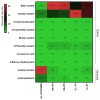
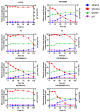
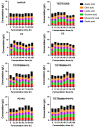

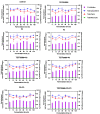

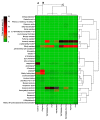

Similar articles
-
Tannin-Tolerant Saccharomyces cerevisiae Isolated from Traditional Fermented Tea Leaf (Miang) and Application in Fruit Wine Fermentation Using Longan Juice Mixed with Seed Extract as Substrate.Foods. 2024 Apr 26;13(9):1335. doi: 10.3390/foods13091335. Foods. 2024. PMID: 38731704 Free PMC article.
-
Valorization of Cashew Apple Waste into a Low-Alcohol, Healthy Drink Using a Co-Culture of Cyberlindnera rhodanensis DK and Lactobacillus pentosus A14-6.Foods. 2024 May 9;13(10):1469. doi: 10.3390/foods13101469. Foods. 2024. PMID: 38790769 Free PMC article.
-
Distribution of tannin-'tolerant yeasts isolated from Miang, a traditional fermented tea leaf (Camellia sinensis var. assamica) in northern Thailand.Int J Food Microbiol. 2016 Dec 5;238:121-131. doi: 10.1016/j.ijfoodmicro.2016.08.044. Epub 2016 Sep 1. Int J Food Microbiol. 2016. PMID: 27614423
-
Flavor impacts of glycerol in the processing of yeast fermented beverages: a review.J Food Sci Technol. 2015 Dec;52(12):7588-98. doi: 10.1007/s13197-015-1977-y. Epub 2015 Aug 1. J Food Sci Technol. 2015. PMID: 26604336 Free PMC article. Review.
-
Current trends and future perspective of probiotic yeasts research in Indonesia.FEMS Yeast Res. 2023 Jan 4;23:foad013. doi: 10.1093/femsyr/foad013. FEMS Yeast Res. 2023. PMID: 36866505 Review.
Cited by
-
Antibacterial activities of Miang extracts against selected pathogens and the potential of the tannin-free extracts in the growth inhibition of Streptococcus mutans.PLoS One. 2024 May 8;19(5):e0302717. doi: 10.1371/journal.pone.0302717. eCollection 2024. PLoS One. 2024. PMID: 38718045 Free PMC article.
-
A Thermotolerant Yeast Cyberlindnera rhodanensis DK Isolated from Laphet-so Capable of Extracellular Thermostable β-Glucosidase Production.J Fungi (Basel). 2024 Mar 23;10(4):243. doi: 10.3390/jof10040243. J Fungi (Basel). 2024. PMID: 38667914 Free PMC article.
-
Tannin-Tolerant Saccharomyces cerevisiae Isolated from Traditional Fermented Tea Leaf (Miang) and Application in Fruit Wine Fermentation Using Longan Juice Mixed with Seed Extract as Substrate.Foods. 2024 Apr 26;13(9):1335. doi: 10.3390/foods13091335. Foods. 2024. PMID: 38731704 Free PMC article.
-
Valorization of Cashew Apple Waste into a Low-Alcohol, Healthy Drink Using a Co-Culture of Cyberlindnera rhodanensis DK and Lactobacillus pentosus A14-6.Foods. 2024 May 9;13(10):1469. doi: 10.3390/foods13101469. Foods. 2024. PMID: 38790769 Free PMC article.
References
-
- Khanongnuch C., Unban K., Kanpiengjai A., Saenjum C. Recent research advances and ethno-botanical history of Miang, a traditional fermented tea (Camellia sinensis var. assamica) of northern Thailand. J. Ethn. Foods. 2017;4:135–144. doi: 10.1016/j.jef.2017.08.006. - DOI
-
- Kanpiengjai A., Chui-Chai N., Chaikaew S., Khanongnuch C. Distribution of tannin-'tolerant yeasts isolated from Miang, a traditional fermented tea leaf (Camellia sinensis var. assamica) in northern Thailand. Int. J. Food Microbiol. 2016;238:121–131. doi: 10.1016/j.ijfoodmicro.2016.08.044. - DOI - PubMed
-
- Kodchasee P., Nain K., Abdullahi A.D., Unban K., Saenjum C., Shetty K., Khanongnuch C. Microbial dynamics-linked properties and functional metabolites during Miang fermentation using the filamentous fungi growth-based process. Food Biosci. 2021;41:100998. doi: 10.1016/j.fbio.2021.100998. - DOI
LinkOut - more resources
Full Text Sources

